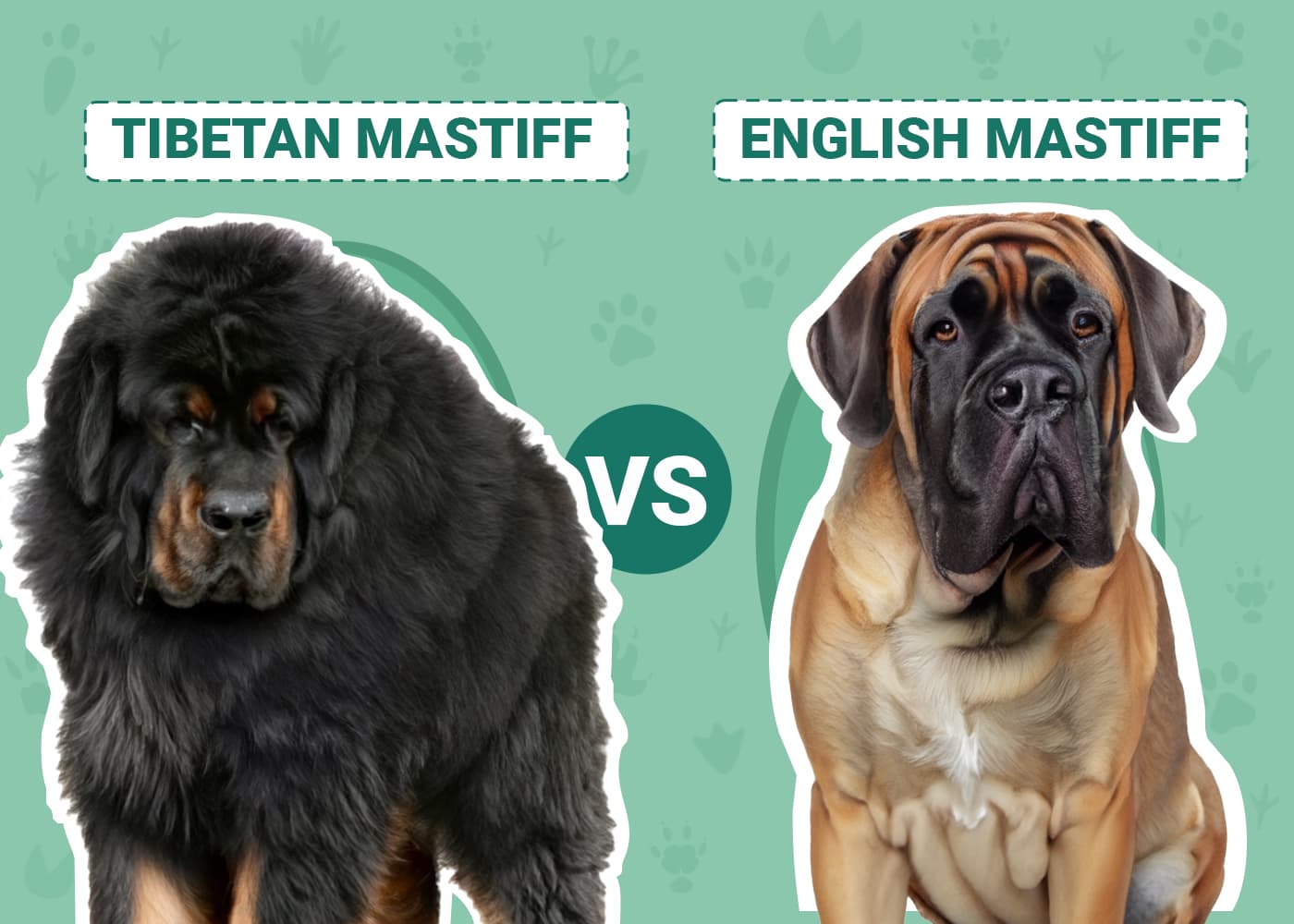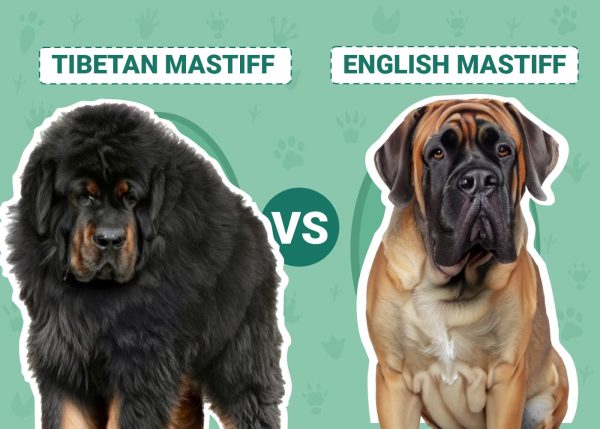Click to Skip Ahead
If you’re considering an English or Tibetan Mastiff as your next dog, you likely have many questions running through your head. Although both are huge breeds, there are several differences between the English and Tibetan Mastiff you need to know before deciding on which to adopt. How they act around their families and strangers, for example, as well as their temperament, trainability, size, and intelligence level.
All these factors and more will play a significant role in your decision. If you need help making up your mind, read on to discover all the similarities and differences between these two gigantic dogs.

Visual Differences

At a Glance
- Average height (adult): 24–26 inches
- Average weight (adult): 70–150 pounds
- Lifespan: 10–12 years
- Exercise: 1 hour a day
- Grooming needs: Moderate to heavy
- Family-friendly: Yes
- Other pet-friendly: Sometimes
- Trainability: Quick learners but often stubborn and temperamental
- Average height (adult): 28–36 inches
- Average weight (adult): 120–220 pounds
- Lifespan: 6–12 years
- Exercise: 1+ hours a day
- Grooming needs: Moderate
- Family-friendly: Yes
- Other pet-friendly: Often
- Trainability: Stubborn, needs firm but gentle training
Tibetan Mastiff Breed Overview
Personality / Character
If a devoted and intelligent guard dog is what you want for your family, there are few dogs better than the Tibetan Mastiff. Although not the largest of the Mastiff breed, the Tibetan is still imposing enough to send a shiver down the spine of anyone who thinks of harming you or your family. On the inside, the Tibetan Mastiff is a dream of a dog; it’s sweet, calm, and loyal towards the people in its “pack.” They aren’t ideal for families with small kids since they often perceive rough behavior as aggression. Several hours of training and socialization are needed when you’re the owner of a Tibetan Mastiff.

Training
As intelligent as they are, training a Tibetan Mastiff is not a walk in the park because they don’t follow the traditional training methods. Yes, the dogs learn quickly and typically obey their owners. However, Tibetan Mastiffs rely on their instincts; if they believe those instincts are better than your commands, they will follow them instead. Veterinarians and Mastiff owners recommend that you always keep your Tibetan on a leash when outside your home. The reason is that, even if they know the commands you’ve taught them, they won’t always listen to them.
Feeding
The Tibetan Mastiff needs a meat-based diet to get enough protein to maintain its large frame, massive joints, and strong muscles. Any dog food you feed your Tibetan Mastiff should have whole animal protein as one of the first ingredients, including chicken, beef, rabbit, fish, pork, etc. It’s also essential that a dog this big also gets plenty of fresh, clean water every day. Because of their massive size, Tibetan Mastiffs require between 4 and 6 cups of food daily.
Health & Care❤️
You’ll be pleased to know that the Tibetan Mastiff is generally a healthy breed. Because they’re gigantic dogs, Tibetan Mastiffs are vulnerable to hip and elbow dysplasia. They can also suffer from hypothyroidism and eye issues, including ectropion.
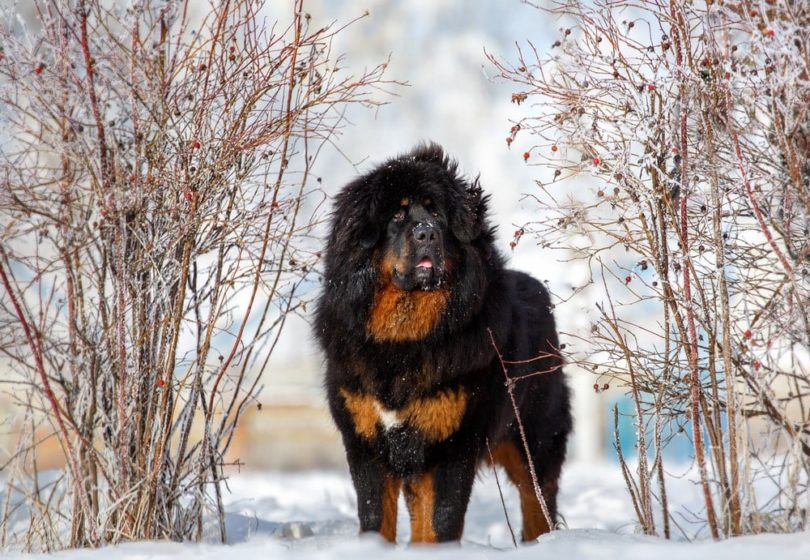
Grooming✂️
The Tibetan Mastiff has a double coat, a heavy undercoat, and coarse guard hair. Thankfully, This coat type requires minimal maintenance and grooming. Brushing once a week to remove dirt and grime from your dog’s coat is all that’s needed in most cases. Your Tibetan will shed heavily once a year, usually in late spring or early summer. When they do, a de-shedding tool will keep your home from becoming covered in dog hair.
Suitable For:
While gentle with family members, it’s recommended that families with tiny children adopt another breed. The issue is not that they’re aggressive but so large that they can accidentally hurt a small child. Also, they can sometimes interpret childlike exuberance as aggression. Families with older children who know how to interact and play with a dog are recommended for a Tibetan Mastiff. It also helps if you’re a physically active owner because walking them can be extremely strenuous.
- Easy to potty train
- Great guard dogs
- Good with older kids
- Affectionate with family members
- Sometimes difficult to control
- Shorter lives due to their large size
- Highly territorial and will often react without provocation
- Sheds heavily once a year

English Mastiff Overview
Personality / Character
Often called the “gentle giant” of the dog world, the English Mastiff is known to be very affectionate with family members. English Mastiffs are supreme guard dogs, but that comes with a small price: aggressive nature towards outsiders. Despite its massive size, this breed is highly intelligent, even-tempered, and usually calm. You must socialize your English Mastiff early so that, when an adult, its aggressive tendencies are reduced. You’ll be glad to know that English Mastiffs are considered one of the best large dogs around children and are self-confident and watchful.
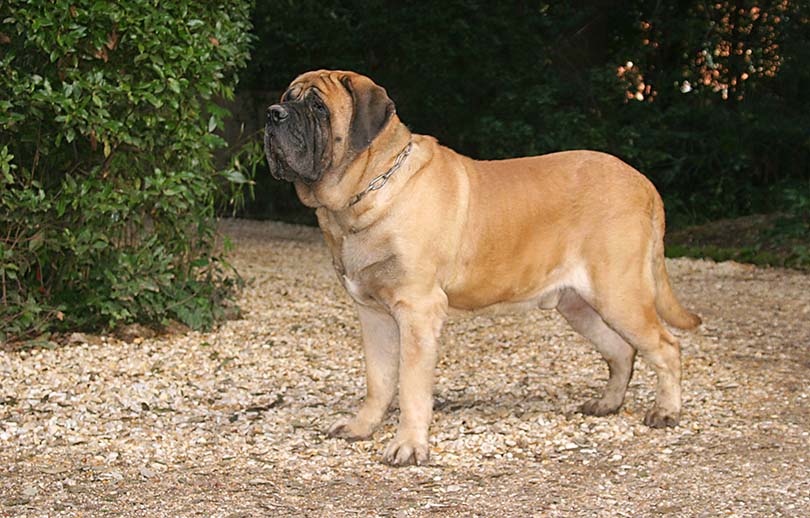
Exercise
What’s fascinating about the English Mastiff is that as big as it is, it only needs a few hours of activity per day to stay healthy and happy. You should walk your Mastiff at least once daily, but their exercise requirements are pretty low. Sometimes, if they get tired, they will plop themselves down wherever they are and stay there as long as they see fit. Also, English Mastiffs tend to get lazy and have issues with obesity as they age.
Training
English Mastiffs are people pleasers and will do whatever they can to make their owners happy. They communicate with their body language and are surprisingly sensitive. When training, it’s best only to use positive reinforcement methods because the breed’s high sensitivity can be problematic and cause them to retreat into themselves. Also, English Mastiffs tend to have a short attention span and, once they’ve learned a command, might ignore you if you try to teach it again. However, once you’ve trained your English Mastiff, it will be a great dog and listen closely to your commands.
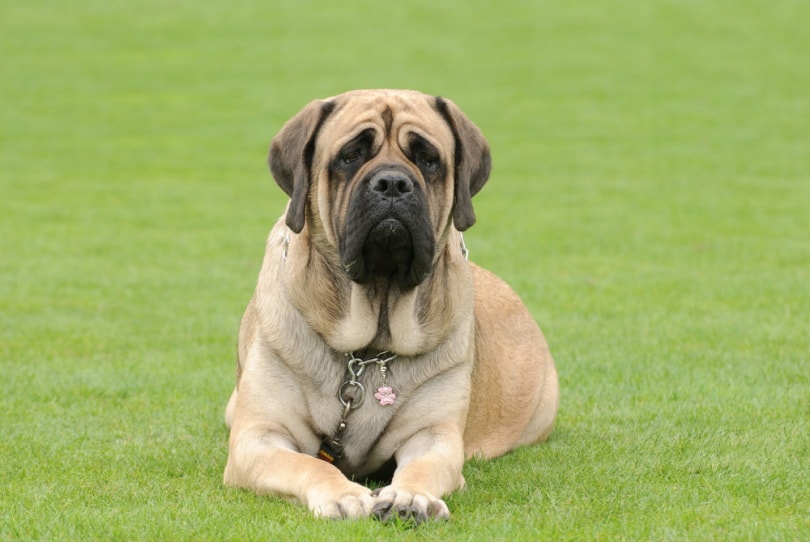
Feeding
Like the Tibetan Mastiff, the English Mastiff needs a high-protein diet from high-grade animal sources. Mastiffs grow rapidly during puppyhood and need a diet with the proper calcium and phosphorus ratio (approximately 1.2:1). Lastly, experts recommend putting your English Mastiff on a feeding schedule to prevent problems with obesity.
Health & Care❤️
English Mastiffs are a relatively healthy breed, but they suffer from health issues that affect large dogs, including elbow and hip dysplasia and epilepsy. They can also experience bloat, which is a condition that’s often life-threatening. It’s highly recommended that you bring your English Mastiff puppy to your veterinarian for an ophthalmologic exam, hip and elbow evaluation, and a cardiac (heart) exam.
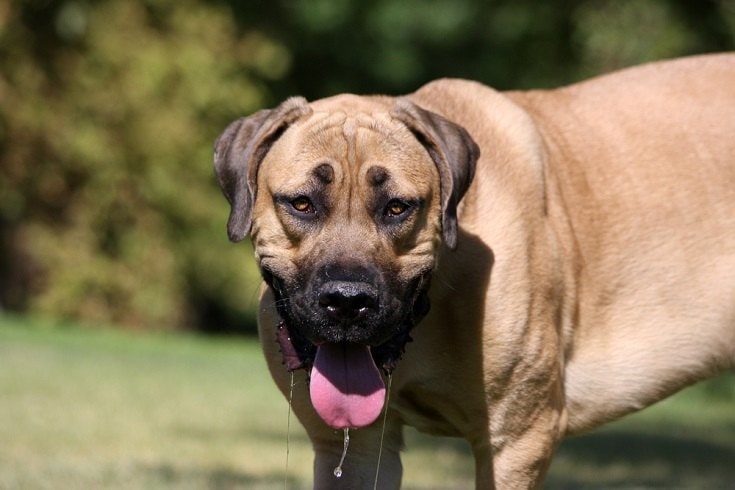
Grooming✂️
You won’t spend a lot of time brushing your English Mastiff because they have a short, dense coat that only needs to be brushed about twice a week. Areas you should pay attention to include their eyes, muzzle, and ears, which should be cleaned often. It’s also a must to always keep a small towel on hand since English Mastiffs drool more than most dogs.
Suitable For:
English Mastiffs are affectionate and loyal dogs that make fantastic family pets. They are excellent with children, staying calm even when kids are roughhousing with them. However, owning and raising such a massive dog takes a special person and family. If you have toddlers or small children, an English Mastiff might not be the best choice as they can accidentally injure a child because of their massive size.
- Gentle, calm dogs when trained well
- Highly protective and loyal to their core
- Relatively easy to groom
- Moderate energy and low barkers
- Good family protectors
- Prone to several health issues
- They drool a lot
- Can be accidentally destructive
- Need a lot of socialization
English vs Tibetan Mastiff – Separation Anxiety
While the English and Tibetan Mastiffs have their differences, they also have one similarity: separation anxiety. Both breeds get highly attached to their human families, and when their people go away, even for a few hours, they can become anxious, upset, and even destructive.
Anecdotal evidence shows that English Mastiffs suffer from separation anxiety more than Tibetan Mastiffs. For example, veterinarians say you can leave a Tibetan Mastiff alone for up to 8 hours. If you need to do that, having a companion dog around to keep your Mastiff company is a good idea.
English vs Tibetan Mastiff – Price
Depending on your budget, you’ll find that the English Mastiff is cheaper to adopt than the Tibetan Mastiff. An English Mastiff will typically cost between $1,200 and $1,500, not including vaccinations, desexing, and supplies. A Tibetan Mastiff, on the other hand, will run between $2,500 to $3,500, nearly double the cost of their English cousins.
English vs Tibetan Mastiff – Affection
According to our research, the English Mastiff is more affectionate towards their owners than the Tibetan Mastiff. English Mastiffs genuinely enjoy spending time with their favorite humans. They also respond strongly to their owner’s emotions and are the perfect example of “people pleasers.” Tibetan Mastiffs are more aloof and less clingy than their English counterparts.

Final Thoughts
As we’ve seen, there are many similarities between the English and Tibetan Mastiffs but also several differences. The English Mastiff is bigger and drools more, but it’s more affectionate and sensitive. The Tibetan Mastiff is more aloof, drools less, and is less loving.
Both breeds are massive dogs needing extensive socialization and training to become well-behaved adults. However, if raised and socialized by a caring and conscientious owner, Mastiffs can become excellent family pets.
Related Reads:
- Pomeranian vs Yorkie: The Differences (With Pictures)
- Moyen vs Standard Poodle: The Differences (With Pictures)
Featured Image Credit: (T) Svetography, Shutterstock | (B) tamara321, Shutterstock

